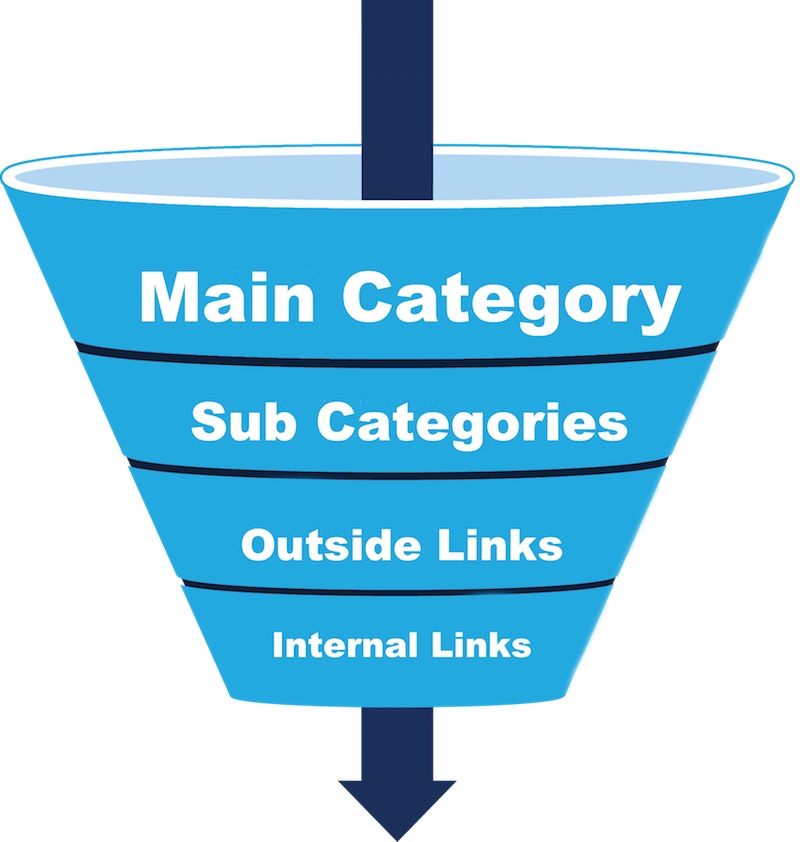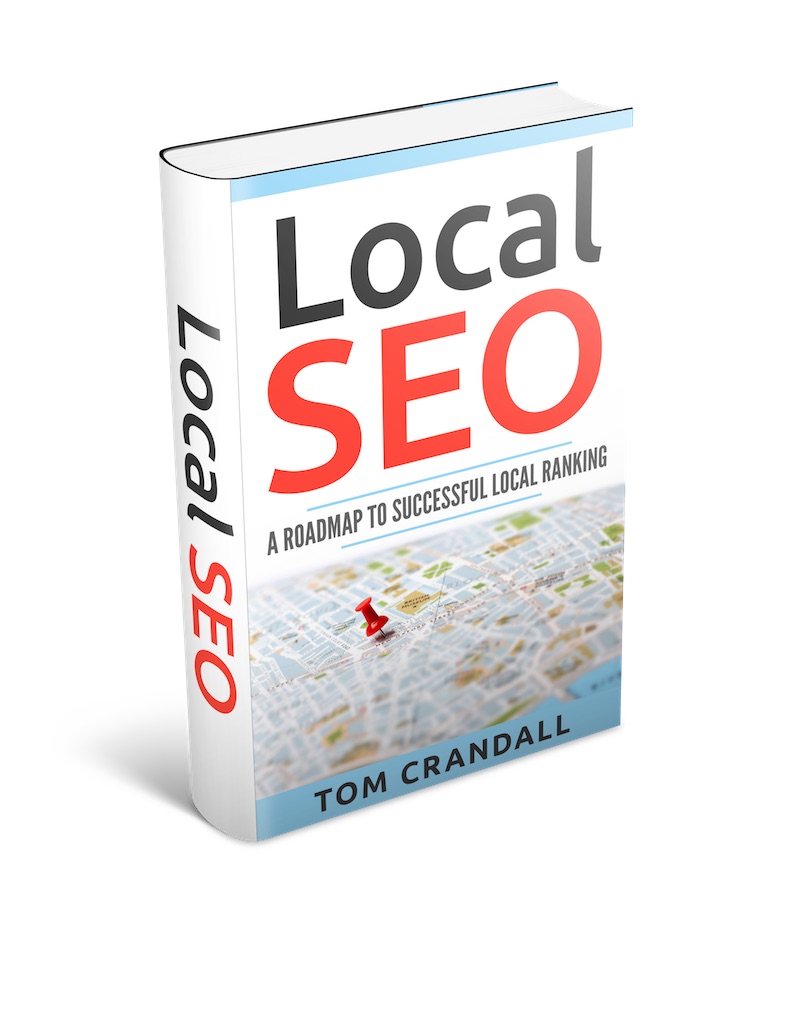Today I wanted to talk about a SEO strategy I use that I call Building A SEO Funnel. When you think of a funnel it’s wide at the top and then gets smaller and smaller until eventually it has a small hole at the end.

Building A SEO Funnel
The Goal of most SEO campaigns is to rank for keywords and keyword phrases so that traffic flows to a website. The more specific the keyword or keyword phrase is, the more qualified the traffic is. So for example if I wanted a wanted to attract car buys, I wouldn’t have articles talking about bicycles, because even though I might rank high with bicycle traffic, chances are those people wouldn’t be primed for buying cars.
BECOME AN EXPERT
Over the years the articles that really seem to rank well within Google are articles that cover a specific category and have sub categories where articles have also been written. This is where the funnel approach pays dividends.
The goal is to create an article, say “Top Indoor Electric Bicycle Trainers” that talks about each electric bike trainer at a high level and then links to a more detailed overview of each bike trainer.
A perfect example of this method being used is Wikipedia. Anytime you visit a Wikipedia page there are lots of internal links taking you to more details about whatever you clicked on.
YOU ARE THE EXPERT – YOU ARE THE AUTHORITY
What ends up happening is Google and other search engines will see that the article is becoming an authoritative article on the subject that is being written about.
SEO Funnel Example
One article I am currently working on pertains to oddly enough Electric Bicycle Trainers. In order to take advantage of how people search I came up with the title “Top Indoor Electric Bicycle Trainers | 2018“. Depending on your subject, it can be advantageous to add the year, especially if the subject matter is electronics or changes over time. Also adding Best, Top, Worst and other descriptive words at the beginning entice people to click on the article.
In the Electric Bicycle Trainer article I highlight the various sub categories I will be talking about.
The current top indoor bike trainers include
- CycleOps Hammer (Direct Drive) – Retail: $1,199.00
- Elite Drivo (Direct Drive) – Retail: $1,299.00
- Elite Rampa (Wheel-On) – Retail: $649.00
- Kurt Kinetic Road Machine Electric (Wheel-On) – Retail: $569.00 for the Road Machine and $749.00 for the Rock and Roll.
- Tacx Neo (Direct Drive) – Retail: $1,599.00
- Tacx Genesis (Wheel-On) – Retail: $649.00
- Wahoo KICKR (Direct Drive) – Retail: $1,199.00
- Wahoo KICKR Snap (Wheel-On) – Retail: $599.00
WHAT’s THE GOAL OF A FUNNEL APPROACH?
The goal of the MAIN CATEGORY ARTICLE is to have a high level overview, in this case Electronic Bicycle Trainers, give a brief description of each and then have more detailed articles prepared that a person can click on. This does two things. First it keeps the reader more engaged and secondly it lessons the chance of them simply clicking the back button.
The other really important factor pertains to Long Tail Keywords. As you go about writing on your main subject or category, you will inevitably create a series of long tail keywords that might also rank and send traffic to your article. This helps ensure that your article out ranks others who haven’t taken this approach.
CONTENT IS KING
When ever I set out to write an article I try to remember that “Content Is King” and try my best to educate and inform the reader. You can’t always control how a person is going to react to an article, but you can try to make it more enjoyable to read.
Let me know what is working for you.










Tom,
Content is definitely king! My site started ranking much higher once I added more video and pictures. It’s good to be keyword heavy, but you have to remember to have good content along with it. Great information!